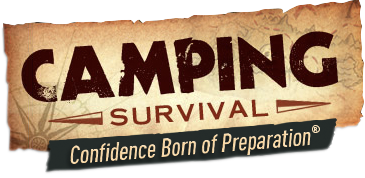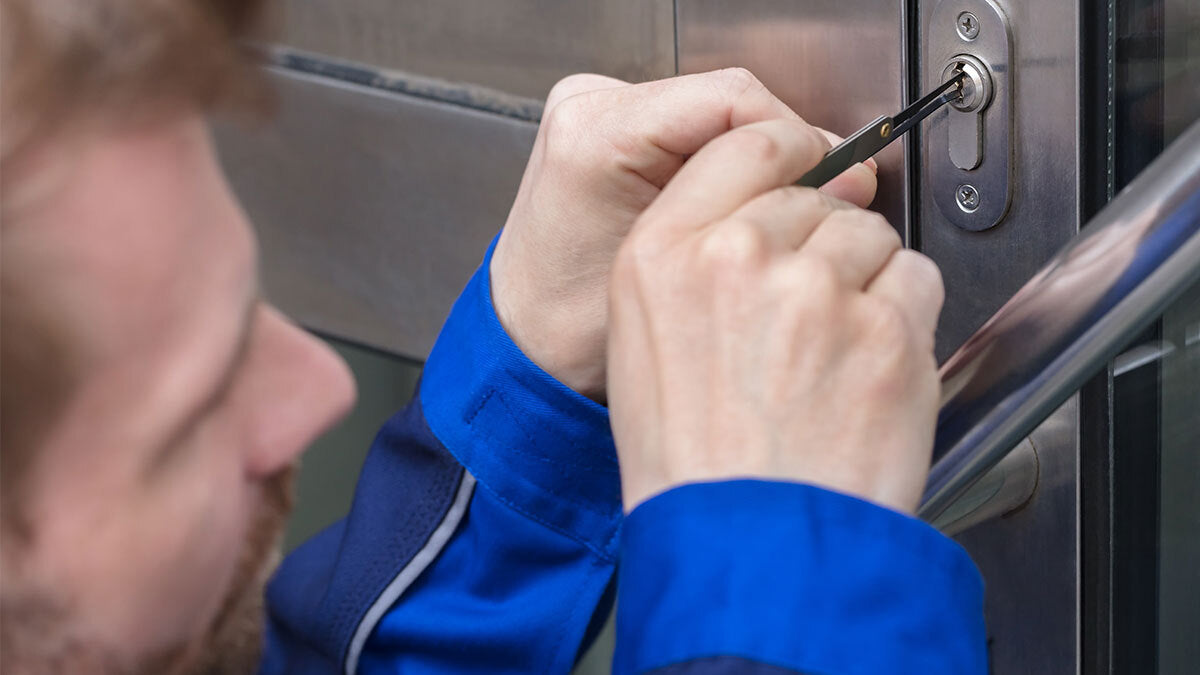Before we get started, a little disclaimer. The following article is for educational purposes only and for use in matters of life and death. We do not encourage or condone criminal activity of any kind.
Why learn lock picking?
There are many emergency scenarios in which learning the basics of lock picking, or breached entry, can be extremely valuable.
Your neighbor might’ve locked themselves out of the house with pets or small children inside...
You might get caught in some bad weather in the wilderness. You find a shelter, only to find the door is locked…
In a true SHTF scenario, like a natural disaster or worse, critical supplies may be just beyond a locked door or padlock…
In these few examples, knowing how to get past a lock can be life-saving. In this article, we’ll cover the basics of lock picking, including gear and techniques.
Remember, this information is to be used only in emergencies. In fact, in some jurisdictions, even carrying some of the gear we’ll mention can be considered a crime. Do your due diligence and check local laws and regulations before acquiring or carrying these items.
Related Read: Five Critical Survival Skills You Need To Master
Before you “pick,” try to bypass
If you’ve ever hired a commercial locksmith, you might be surprised how rarely they actually use traditional lock picks.
That’s because it’s often easier to bypass a lock than pick it.
Here’s a few things to consider before you pick a lock.
Consider other avenues of entry
Many buildings have multiple entry points. Not all of them may be locked. In fact, it’s common for businesses (and some homes) to lock the front door and leave another more frequently used entry point unlocked.
Windows, especially in summer, are often left unlatched and can be pried open with a flathead screwdriver easily. Glass, especially single pane, can also be easily broken if it’s an urgent emergency. Entering through broken glass can be dangerous, for obvious reasons.
So before you focus on breaching a locked entry, look for easier alternatives.

Look for stashed keys
People forget their keys all the time, which makes stashed keys useful.
Make sure you check under the doormat, in the mailbox, under any nearby rocks or bushes for stashed keys.
Many people also use “hide a keys” that look like natural objects - usually rocks but also things like pinecones – to stash keys. Be observant and you might find a stashed key in one of these items.
Pry it open
Again, if you’ve ever locked yourself out of your vehicle or home and called a locksmith, they probably attempted to pry open the locked door first. Particularly with vehicles, you’ll see them use an air wedge or shim to get behind the window seal, pump up the shim, and unlock the door from the inside.
To pry open any door, you need tools that can pry and a wedge or two to keep the door pried open.
Here’s an example:
- Use a long flathead screwdriver to get the door started.
- Insert a wedge, like a door stopper into the opening before removing the screwdriver
- Insert a pry bar into the opening, and push towards the resistance to open the door.
- If one pry bar is not enough leverage, insert another so that it will pry in the other direction. You may need another person to pry with this second bar, depending on the resistance the door gives you.
I get that not everyone carries wedges and pry bars, even screwdrivers with them everywhere. Nor am I suggesting you carry them at all times. Here are some other improvised pry tools you can use:
- Butter knife
- Credit cards (especially useful with lever-type door knobs)
- Putty knife
- Metal rulers
- Hammer (claw end)
- Lawnmower blade
- Canoe/kayak paddle
- Larger coinage (American quarters and larger)
- Chisels
- Shovel heads
Related Read: How to Survive with What's In Your Pockets
Basically, you want to find something with a thin end that you can apply leverage. Later, we’ll cover improvised picking tools as well.
Breaking the lock or door
Finally, if you encounter a lock that can’t be pried, like a padlock, you might be able to break the link with something like a pair of bolt cutters.
Similarly, many doors, especially internal ones, have hollow centers and can be easily kicked or punched through. Be sure the door is not solid metal or wood before you try this method, though.

Basics of Lock Picking
Once you’ve tried methods of bypassing the lock and they fail, you can try picking the lock.
There are many methods of lock picking as well as many styles of locks. In this article, we’ll cover the very basics and the most common style of lock, the basic pin tumbler. At the end of this article, we’ll provide resources for further education on lock picking.
A common misconception is that lockpicking is extremely difficult, but that’s not exactly true. All it takes is a little knowledge and practice. That being said, it’s a good idea to study and practice these skills before a SHTF scenario.
The Pin Tumbler Lock
The basic pin tumbler lock consists of a cylinder containing two sets of pins held under tension with springs. A key cut for any pin tumbler will push each of the pins precisely out of the bottom, or plug, of the cylinder and enable the lock to turn freely.
The job of lock picking is to use tools to perform the same function as the key.
Let’s discuss those various tools, as well as improvised picking tools. Remember, carrying some of these tools can be illegal in certain jurisdictions, so do your research before acquiring.
Bump Key Sets
These aren’t lock picking tools per se, but they are a part of any picker's arsenal. Basically, these come in pre-cut sets that can bypass common locks. These take a little trial and error (or research) to match the bump key to the lock, but can often be quicker than using traditional picking tools. Each set will have its own instructions for use, but the basics are:
- Find a key that fits all the way into the cylinder
- Turn the key with light pressure
- Strike the back of the bump key with a blunt object
- Continue until the key turns completely

Hooks and Rakes
These are the tools you might have in mind when you think of a lock picking set.
Both of these are thin diameter tools, with minor differences. A hook will have a single hooked point, while rakes will have multiple points or ridges. Their uses relate to these numbers of points too: hooks are used to break a single pin at a time, while rakes can break multiple pins at a time. Certain locks are more easily broken with single-pin picking (using a hook) and some are more easily raked open. The technique differs between the two, which we will discuss briefly in a moment.
Tension wrenches and turning tools
These tools are used in conjunction with the tools mentioned above and are responsible for the torque needed to bind the pins and thus pick them, and then turn the lock. These look kind of like allen wrenches. You stick the short end in the lock and use the long end to apply light torque or tension.
A brief overview of the technique behind using these tools:
- Insert the short end of the tension wrench into the bottom of where the key goes.
- Apply light tension in the direction you would normally turn the key (most commonly clockwise).
- Insert either your hook or rake into the keyway all the way in to the back of the lock.
- With a hook, you’ll need to raise each pin until you find the one that is bound (typically the one that is hardest to lift). Then continue to lift this pin until it either rotates or clicks. Proceed to do this with the remaining pins.
- With a rake, you’ll want to slowly draw the tool back and forth at different angles until all the pins set. If this doesn’t work within 10-15 seconds, remove all tools and begin again. This resets the lock and is sometimes necessary to do a few times when using rake style tools.
- Rotate the lock with the tension wrench slowly to open the lock.
Again, this is a primer and doesn’t cover every lock or every technique. To take an even deeper dive into this craft, which becomes a hobby for many, check out the additional resources below.
Improvised lock picking tools
Your best bet in employing the techniques described above are with purpose-built tools. However, we know that in a survival scenario, these may not be available. With that in mind, here are a few items that you can use as picking tools in a pinch:
- Bobby pins
- Paper clips
- Jigsaw and hacksaw blades
- Windshield wiper inserts
- Oil dipsticks
To wrap up, we hope you consider adding this skill to your knowledge base as you become a more seasoned survivalist and adventurer. While no one expects to need to use lock picking skills, they can come in handy, especially if time is of the essence.
Additional Resources
Art of Lock Picking
Lock Picking 101
Locksport Guide to Lock Picking
MIT Guide to Lock Picking


0 comments